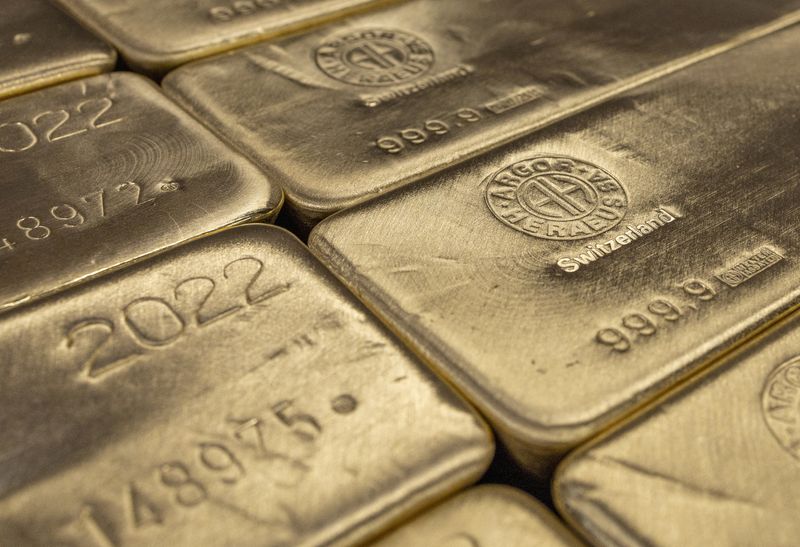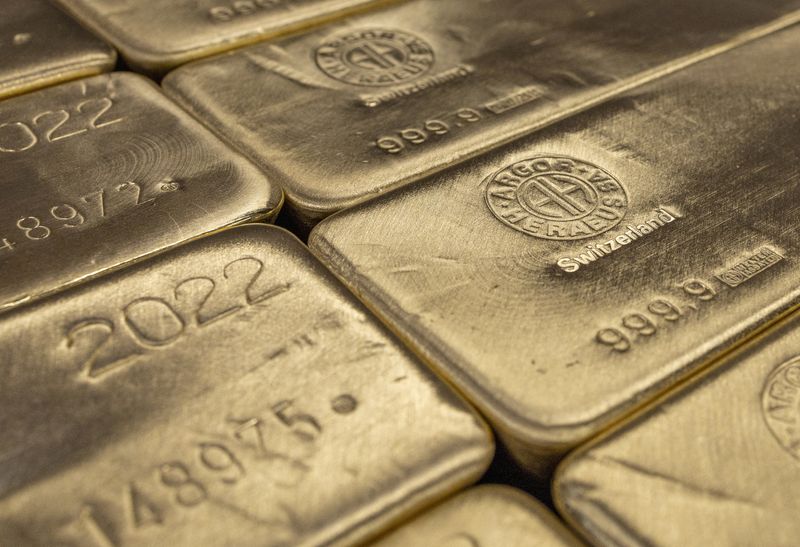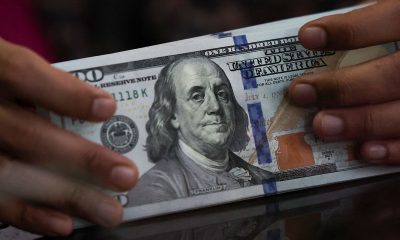Commodities
Gold bulls eye more record highs despite lightning gains

By Polina Devitt
LONDON (Reuters) -An upgraded gold price forecast for 2024 from Nicky Shiels, head of metals strategy at Swiss gold refinery MKS PAMP, drew an unexpected follow-up question this week from market participants. The enquiry was: “Will or can gold ‘go cocoa’?”
Cocoa prices have more than doubled since the start of 2024 due to poor harvests in Ivory Coast and Ghana.
Meanwhile, , a much more global and liquid market, hit record highs on five previous trading sessions as investors jumped in looking for exposure to the metal used to preserve wealth.
Gold’s record high at $2,305.04 an ounce hit on Thursday amounts to a gain of 12% since the start of the year.
“There is almost zero probability gold can replicate those gains in that amount of time,” Shiels said.
While cocoa price growth is driven by supply shortage, the gold market is protected by significant stocks held by individuals and reserves of central banks, which own one-fifth of all the gold ever mined.
“One cannot de-stock chocolate bars at the same rate as one can de-stock gold bars,” she said. Her forecast for the 2024 average gold price was raised by $150 to $2,200 an ounce.
However, while the market may not exactly “go cocoa”, analysts retain a bullish tone even as technically the market feels ripe for hefty falls due to it being overbought.
“It is hard to say where values are going to top out as there are no resistance “signposts” on the charts,” said Marex analyst, Edward Meir.
Gold’s April rally came on top of its 9.3% jump in March, the strongest since July 2020, which unfolded despite traditional macro headwinds such as a strong dollar and elevated U.S. real interest rates.
Over-the-counter and futures gold markets have been buoyant, with an estimated 40% rise in trading volumes, said Johan Palmberg, senior quantitative analyst at the World Gold Council.
“And there is outsized activity in the gold options market, in comparison with the likes of equities and bonds, which implies that the current interest is specifically in gold.”

Further out, many analysts expect gold to test new highs once the U.S. Federal Reserve starts cutting key rates triggering demand from investors sitting on the sidelines such as holders of physically-backed gold exchange traded funds (ETFs).
“We had previously proposed a $2,400 per ounce price estimate if the Fed cut rates in the first quarter of 2024; we commit to that estimate for this year, even if rate cuts come later,” analysts at BofA said in a note.
Commodities
Oil prices rise; U.S. crude inventories plunge, Russia-Ukraine truce eyed
Commodities
India’s Reliance to stop buying Venezuelan oil over US tariffs, sources say
Commodities
Oil prices climb on Venezuela supply worries

 Forex3 years ago
Forex3 years agoForex Today: the dollar is gaining strength amid gloomy sentiment at the start of the Fed’s week

 Forex3 years ago
Forex3 years agoUnbiased review of Pocket Option broker

 Forex3 years ago
Forex3 years agoDollar to pound sterling exchange rate today: Pound plummeted to its lowest since 1985

 Forex3 years ago
Forex3 years agoHow is the Australian dollar doing today?

 Cryptocurrency3 years ago
Cryptocurrency3 years agoWhat happened in the crypto market – current events today

 World3 years ago
World3 years agoWhy are modern video games an art form?

 Commodities3 years ago
Commodities3 years agoCopper continues to fall in price on expectations of lower demand in China

 Economy3 years ago
Economy3 years agoCrude oil tankers double in price due to EU anti-Russian sanctions

























